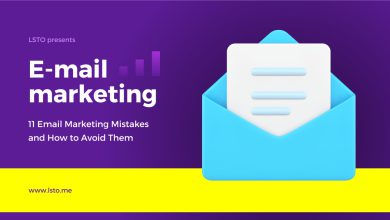
Email marketing is an effective tool for businesses to reach out to potential customers and keep existing customers informed. It is also a cost-effective way to increase customer loyalty and sales. As a business owner, you may be considering using email marketing to reach clients, but be unsure of how to get started. This article will provide step-by-step guidance on how to do email marketing for clients, from developing content ideas to measuring success.
1. Carefully build your email list
Email marketing is a critical aspect of any business’s success, and carefully building your email list is the key to making sure that you can reach all of your potential customers. Having an up-to-date list of contacts, allows you to stay connected with potential clients to cultivate relationships and maintain loyalty.
When it comes to building an effective email list for your business, make sure that you take the time to do it right. Carefully evaluate each candidate before adding them; this will help ensure that the emails are going out only to those who have expressed genuine interest in the services or products offered by your business. Additionally, be sure that any emails sent out are conversational and helpful rather than simply trying to make a sale–this will help build trust with recipients and encourage them to remain engaged with your company in the future.
2. Choose the right subject lines
Finding the right subject line for your emails is one of the most important aspects of email marketing. Choosing the right subject lines can maximize your chances that clients will open, read and respond to your emails promptly. Here are some tips on how to choose the best subject lines when sending out emails to clients:
First, it is important to be brief yet compelling. Your subject line should not exceed 40 characters as this allows people to see the whole message without having to click “show more.” Additionally, you should use words that show urgency or inspire curiosity so that customers are more likely to open your emails. Utilizing actionable words such as ‘discover’ or ‘unlock’ can help create an intriguing prompt for potential customers.
3. Personalize your emails
Email marketing is a powerful and effective tool for businesses to reach their clients. Personalizing emails can help build relationships with clients, boost customer loyalty, and increase sales. With the right strategy, businesses can use personalization to make client interactions more meaningful and drive results.
Personalizing emails involves customizing content for the target audience. This could include addressing each customer by their name at the beginning of an email or segmenting customers based on past purchases or interests. By understanding who customers are and what they care about, marketers can tailor emails that are specifically relevant to them. Additionally, incorporating visuals such as videos or GIFs into email marketing campaigns can help create more immersive experiences for recipients.
With personalization in email marketing strategies, businesses can foster stronger connections with their customers while driving better results from campaigns in terms of engagement rates, ROI, and conversions.
4. Write engaging and informative content
Email marketing is an effective tool for businesses to reach clients and build relationships. It’s one of the most cost-effective ways to market your services or products and can be used to inform, educate, and even entertain customers. Writing engaging and informative content for email campaigns is essential if you want to make a lasting impression on your target audience.
To write engaging content that resonates with people, it’s important to understand who they are, what they need, and how they want it presented. For example, if you specialize in email marketing for clients in the restaurant industry, you’ll want to create content that speaks directly to their needs like tips on customer retention or menu optimization strategies. Make sure your emails contain valuable information that adds value rather than just trying to sell something — this will help build trust with customers over time.
5. Ensure emails are flawless across all devices
Email marketing is an essential component of any successful business’s outreach strategy. With the majority of consumers engaging with emails across different devices, it’s crucial to ensure that email campaigns render correctly on all displays. An effective approach to creating customer-centric emails is key to ensuring they are flawless across all devices and platforms, as well as engaging customers with well-crafted content.
For businesses looking to make their email campaigns stand out amongst competitors, there are a few simple steps they can take to make sure their emails look perfect on each device. These include using responsive web design (RWD) principles when constructing emails; testing them before sending them out; and optimizing images for the best possible quality on both mobile phones and desktop computers. Additionally, they should also make use of tools like Litmus which helps detect any coding errors or broken links before launch day arrives.
6. Integrate social media marketing into emails
Email marketing is one of the most important elements in successful client engagement and retention. Social media marketing can be integrated into emails to create a powerful tool for connecting with clients. By adding social media messages, businesses can create a more personalized experience for their customers that has been proven to increase customer loyalty.
Social media messages within emails provide an opportunity to connect with clients in a new way. A cleverly designed email message featuring links to a company’s social media accounts allows customers to feel connected through multiple channels, improving the relationship between business and customer. This tactic has been seen to help build trust with customers by giving them access to exclusive content from their favorite brands. Additionally, it encourages customers to engage further with your brand on social media platforms by allowing them easy access via the email link.
7. Optimize your emails for SEO
Email marketing is a powerful tool for businesses to reach their clients and potential customers. When done correctly, it can help boost organic traffic from search engine results. To ensure the maximum effectiveness of your email campaigns, it’s important to optimize them for SEO.
First and foremost, you should make sure that the content in your emails is relevant to the keywords that are associated with your business and industry. This will ensure that search engine bots will recognize its value when indexing your website or blog post URLs included in the message body. Additionally, including internal links within emails can help improve the SEO rankings of other pages on your website by creating backlinks back to the page they link to.
8. Insert compelling CTAs
Email marketing has become a popular and effective tool for businesses to reach out to their customers. Crafting compelling calls-to-action (CTAs) can ensure that clients take the desired action when engaging with your emails. Here’s how you can create CTAs that get results in email marketing for clients.
First, consider what outcome you’re looking for by creating a CTA – this will help guide your decisions on its design and message. By making sure each CTA is tailored to the client’s needs, you can increase engagement and improve the chances of them taking desired actions such as signing up for newsletters or purchasing products. Additionally, be sure to use language that encourages customers to act quickly; phrases like “Don’t miss out!” or “Order now!” are great ways to motivate people into clicking through.
9. Set SMART goals
Setting SMART goals for your email marketing campaigns can help you develop successful, targeted campaigns that will reach more customers. Creating objectives that are Specific, Measurable, Achievable, Relevant, and Time-bound (SMART) will put you in a better position to make sure your message reaches the right people at the right time.
When creating SMART goals for your email marketing campaigns, it is important to be specific about who you are targeting and what action you want them to take after receiving the email. You should also consider how much time or money it takes to achieve each goal and whether or not they are realistic and achievable within the given timeframe. Additionally, setting measurable metrics such as open rate, click-through rate, or conversion rate helps track progress toward achieving your goals.
10. Use A/B tests for your emails
A/B testing is a great way to ensure your email campaigns are successful. By utilizing this method, you can make sure that the content you’re sending to your clients resonates with them and maximizes engagement. Here’s why A/B testing is an essential tool for successful email marketing:
A/B testing compares two versions of the same email to determine which performs better. You can tweak elements such as subject lines, images, and call-to-action buttons to see how they affect open rates and click-through rates. This allows you to test what works best for your specific audience so that you can create emails tailored to their needs and preferences. With A/B testing, you have the power to track customer interactions in real-time and make changes accordingly – ensuring maximum engagement with every campaign.




